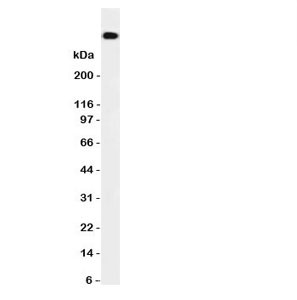Cookie preferences
This website uses cookies, which are necessary for the technical operation of the website and are always set. Other cookies, which increase the comfort when using this website, are used for direct advertising or to facilitate interaction with other websites and social networks, are only set with your consent.
Configuration
Technically required
These cookies are necessary for the basic functions of the shop.
"Allow all cookies" cookie
"Decline all cookies" cookie
CSRF token
Cookie preferences
Currency change
Customer-specific caching
FACT-Finder tracking
Individual prices
Selected shop
Session
Comfort functions
These cookies are used to make the shopping experience even more appealing, for example for the recognition of the visitor.
Note
Show the facebook fanpage in the right blod sidebar
Statistics & Tracking
Affiliate program
Conversion and usertracking via Google Tag Manager
Track device being used

| Item number | Size | Datasheet | Manual | SDS | Delivery time | Quantity | Price |
|---|---|---|---|---|---|---|---|
| NSJ-R31076 | 100 µg | - | - |
3 - 10 business days* |
755.00€
|
If you have any questions, please use our Contact Form.
You can also order by e-mail: info@biomol.com
Larger quantity required? Request bulk
You can also order by e-mail: info@biomol.com
Larger quantity required? Request bulk
0.5mg/ml if reconstituted with 0.2ml sterile DI water. Protein Kinase DNA-Activated catalytic... more
Product information "Anti-DNA-PKcs"
0.5mg/ml if reconstituted with 0.2ml sterile DI water. Protein Kinase DNA-Activated catalytic subunit, also called DNAPK, HYRC1, p350 or DNPK1, is an enzyme that in humans is encoded by the PRKDC gene. DNA-PKcs belongs to the phosphatidylinositol 3-kinase-related kinase protein family. Satoh et al.(1997) mapped the MCM4 gene to 8q11.2 by FISH. Based on the close proximity of the PRKDC and MCM4 genes, it was assumed that the PRKDC gene also maps to this location. Anderson and Lees-Miller(1992) noted that DNA-PKcs had been shown in vitro to phosphorylate several transcription factors, suggesting that it functions in cell homeostasis by modulating transcription. Daniel et al.(1999) demonstrated that the DNA-PKcs protein participates in retroviral DNA integration, which is catalyzed by the viral protein integrase. Protein function: Serine/threonine-protein kinase that acts as a molecular sensor for DNA damage. Involved in DNA non-homologous end joining (NHEJ) required for double-strand break (DSB) repair and V(D)J recombination. Must be bound to DNA to express its catalytic properties. Promotes processing of hairpin DNA structures in V(D)J recombination by activation of the hairpin endonuclease artemis (DCLRE1C). The assembly of the DNA-PK complex at DNA ends is also required for the NHEJ ligation step. Required to protect and align broken ends of DNA. May also act as a scaffold protein to aid the localization of DNA repair proteins to the site of damage. Found at the ends of chromosomes, suggesting a further role in the maintenance of telomeric stability and the prevention of chromosomal end fusion. Also involved in modulation of transcription. Recognizes the substrate consensus sequence [ST]-Q. Phosphorylates 'Ser-139' of histone variant H2AX/H2AFX, thereby regulating DNA damage response mechanism. Phosphorylates DCLRE1C, c-Abl/ABL1, histone H1, HSPCA, c-jun/JUN, p53/TP53, PARP1, POU2F1, DHX9, SRF, XRCC1, XRCC1, XRCC4, XRCC5, XRCC6, WRN, MYC and RFA2. Can phosphorylate C1D not only in the presence of linear DNA but also in the presence of supercoiled DNA. Ability to phosphorylate p53/TP53 in the presence of supercoiled DNA is dependent on C1D. Contributes to the determination of the circadian period length by antagonizing phosphorylation of CRY1 'Ser-588' and increasing CRY1 protein stability, most likely through an indirect machanism. Interacts with CRY1 and CRY2, negatively regulates CRY1 phosphorylation. [The UniProt Consortium]
| Keywords: | Anti-p460, Anti-HYRC, Anti-PRKDC, Anti-DNPK1, Anti-DNA-PKcs, EC=2.7.11.1, Anti-DNA-PK catalytic subunit, Anti-DNA-dependent protein kinase catalytic subunit, DNA-PKcs Antibody |
| Supplier: | NSJ Bioreagents |
| Supplier-Nr: | R31076 |
Properties
| Application: | WB |
| Antibody Type: | Polyclonal |
| Conjugate: | No |
| Host: | Rabbit |
| Species reactivity: | human |
| Immunogen: | An amino acid sequence from the N-terminus of human PRKDC (AKNAEMHKNKLQYFMEQFY) was used as the immunogen for this DNA-PKcs antibody. |
| Format: | Purified |
Database Information
| KEGG ID : | K06642 | Matching products |
| UniProt ID : | P78527 | Matching products |
| Gene ID | GeneID 5591 | Matching products |
Handling & Safety
| Storage: | +4°C |
| Shipping: | +4°C (International: +4°C) |
Caution
Our products are for laboratory research use only: Not for administration to humans!
Our products are for laboratory research use only: Not for administration to humans!
Information about the product reference will follow.
more
You will get a certificate here
Viewed



